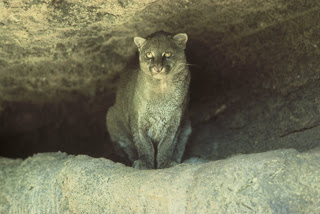Congress will
soon take up Comprehensive Immigration Reform.
That could be a good thing, if it normalizes the status of millions who
are now forced to live in the shadows; reduces the number of immigrants who
cross, and sometimes die, in the desert; and allows some of the $18 billion
that is spent annually on immigration enforcement to be used for other
things.
But if
history is any guide it could also mean a ramping up of border enforcement, with
billions more wasted on border walls.
In 2006, the last time
Congress made a serious attempt at Comprehensive Immigration Reform, hundreds
of miles of border wall were included in competing House and Senate bills. The two bills were never reconciled and
therefore never made it to the President’s desk.
Instead the provisions
calling for walls along the southern border were passed by both houses as a
stand-alone bill - the Secure Fence Act.
650 miles of border wall were eventually built, tearing through
communities from San Diego to Brownsville and ecosystems from the Otay Mountain
Wilderness Area to the Sabal Palms Audubon Sanctuary.
The idea that walls would
halt potential crossers in their tracks proved to be more fantasy than
reality. The Congressional Research
Service reported that walls near San Diego had “little impact on overall apprehensions.” Even the Border Patrol said that “The border fence is a speed bump in
the desert.”
While walls have not
reduced the number of immigrants who enter the U.S., they have caused the
number of border crossers who perish in southern deserts each year to more than
double. That is because border walls do not stop people from entering the United
States, they only reroute them.
Confronted with an 18 foot
high wall near San Diego or El Paso or Brownsville desperate immigrants do not
turn around and go home, they go around it.
Rather than crossing in safer urban areas thousands come through rugged mountains
and deserts. As a result more than 5,000
have died from dehydration and exposure, and it is estimated that thousands of
bodies lie undiscovered.
Walls
and other enforcement measures have also taken a heavy toll on the
environment.
California’s
Otay Mountain Wilderness Area saw 530,000 cubic yards of rock blasted from the
mountainsides tumble into the Tijuana River.
In Arizona the border walls that cross washes and streams in the Organ
Pipe Cactus National Monument have caused severe erosion and flooding. Walls built in New Mexico’s Playas Valley
block the movement of one of the last wild herds of bison, whose range
straddles the U.S. – Mexico border. And
in Texas the walls that slice through the Lower Rio Grande Valley National
Wildlife Refuge have fragmented habitat that is critical for the survival of
endangered ocelots.
Following the
recent election, in which some (but unfortunately not all) of the loudest
immigrant-bashers suffered defeat and more than 70% of Hispanic voters rejected
Mitt Romney, many politicians have decided that it is in their best interest to
pass some version of immigration reform.
The big concern
is that we could see history repeat itself.
Press reports
describe the coming bill as mirroring past legislation, pairing work visas and
a pathway to citizenship with more border enforcement.
Once again
the border may be sacrificed in a doomed attempt to get conservatives to accept
comprehensive legislation.
The idea that
members of Congress who have called for making the lives of immigrants so
hellish that they “self-deport”, or who voted just last summer to waive federal
laws within 100 miles of both borders for all Border Patrol activities, will now
support humane immigration legislation is unrealistic. Sticking walls in the bill will not change
that.
Instead, if
walls and further border enforcement are allowed in this year’s legislation we
run the risk of a repeat of 2006, when hundreds of miles of border walls were
the only part of the immigration bill to make it to the president’s desk.
Those of us
who live on the border have already seen too much of the enforcement side of
that equation. Last year the federal
government spent more on immigration enforcement than the budgets of the FBI, Secret Service, Drug Enforcement
Administration, U.S. Marshal Service, and the Bureau of Alcohol, Tobacco,
Firearms and Explosives combined.
Enough.
Members of
Congress who were sent to DC to represent the border need to fight for their
constituents, but so far they have been silent.
With much of Arizona and California already walled off, Representatives Vela,
Hinojosa, Cuellar, Gallego, and O’Rourke could all see new walls tear through
their districts if they don’t make sure that border walls are kept out of the
bill, but none have told us what (if anything) they plan to do about it.
This is a
critically important piece of legislation for border communities, and border
legislators should take the lead in writing it.
That is their job, after all.
Sitting silently in the back of the room and hoping for the best is not
going to cut it this time.
Congress
needs to come up with a clean bill, dealing with immigration without further
militarizing the borderlands. No new
border walls, no more pork for military contractors; instead we as a nation
must address our dysfunctional immigration system in a way that is both
effective and humane.
We need immigration
reform that doesn’t throw the border under the bus.




